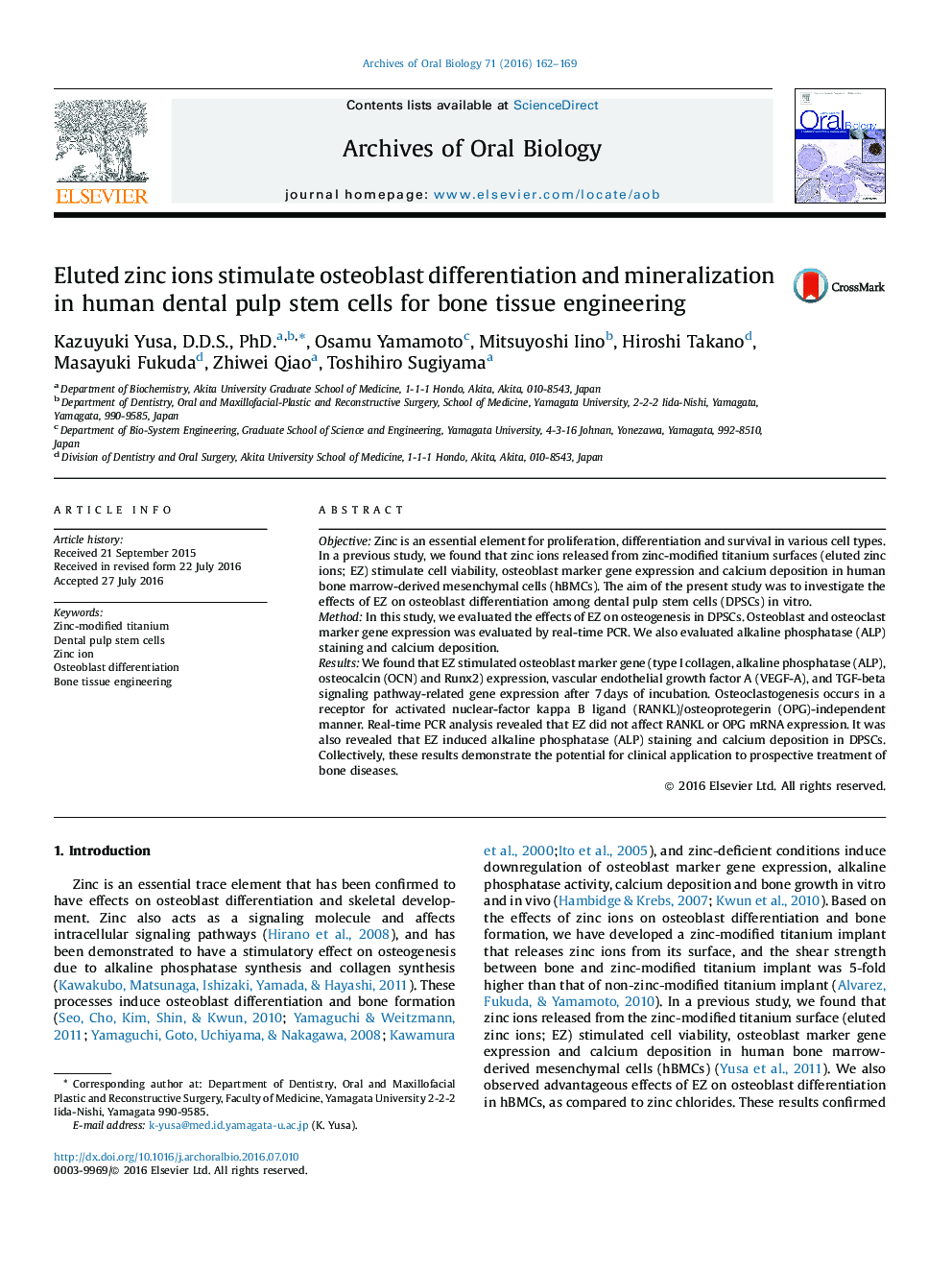| Article ID | Journal | Published Year | Pages | File Type |
|---|---|---|---|---|
| 3120582 | Archives of Oral Biology | 2016 | 8 Pages |
••We evaluated EZ on osteoblast differentiation in DPSCs.••EZ did not affect cell proliferation.••EZ promoted osteoblast marker gene expression.••EZ induced prominent alkaline phosphatase staining and matrix mineralization.
ObjectiveZinc is an essential element for proliferation, differentiation and survival in various cell types. In a previous study, we found that zinc ions released from zinc-modified titanium surfaces (eluted zinc ions; EZ) stimulate cell viability, osteoblast marker gene expression and calcium deposition in human bone marrow-derived mesenchymal cells (hBMCs). The aim of the present study was to investigate the effects of EZ on osteoblast differentiation among dental pulp stem cells (DPSCs) in vitro.MethodIn this study, we evaluated the effects of EZ on osteogenesis in DPSCs. Osteoblast and osteoclast marker gene expression was evaluated by real-time PCR. We also evaluated alkaline phosphatase (ALP) staining and calcium deposition.ResultsWe found that EZ stimulated osteoblast marker gene (type I collagen, alkaline phosphatase (ALP), osteocalcin (OCN) and Runx2) expression, vascular endothelial growth factor A (VEGF-A), and TGF-beta signaling pathway-related gene expression after 7 days of incubation. Osteoclastogenesis occurs in a receptor for activated nuclear-factor kappa B ligand (RANKL)/osteoprotegerin (OPG)-independent manner. Real-time PCR analysis revealed that EZ did not affect RANKL or OPG mRNA expression. It was also revealed that EZ induced alkaline phosphatase (ALP) staining and calcium deposition in DPSCs. Collectively, these results demonstrate the potential for clinical application to prospective treatment of bone diseases.
